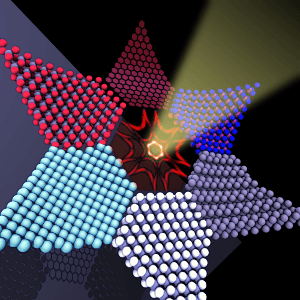High-performance computing helps to survey optical qualities of atom-thick materials for optoelectronics
 Two-dimensional materials have been a hot research topic since graphene, a flat lattice of carbon atoms, was identified in 2001. Since then, scientists have raced to develop, either in theory or in the lab, novel 2D materials with a range of optical, electronic and physical properties.
Two-dimensional materials have been a hot research topic since graphene, a flat lattice of carbon atoms, was identified in 2001. Since then, scientists have raced to develop, either in theory or in the lab, novel 2D materials with a range of optical, electronic and physical properties.
Until now, they have lacked a comprehensive guide to the optical properties those materials offer as ultrathin reflectors, transmitters or absorbers.
The Rice lab of materials theorist Boris Yakobson took up the challenge. Yakobson and his co-authors, graduate student and lead author Sunny Gupta, postdoctoral researcher Sharmila Shirodkar and research scientist Alex Kutana, used state-of-the-art theoretical methods to compute the maximum optical properties of 55 2D materials.
Their work, which appears this month in the American Chemical Society journal ACS Nano, details the monolayers’ transmittance, absorbance and reflectance, properties they collectively dubbed TAR. At the nanoscale, light can interact with materials in unique ways, prompting electron-photon interactions or triggering plasmons that absorb light at one frequency and emit it in another.
– See more at Rice News


